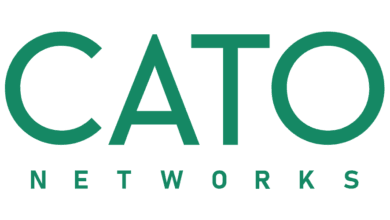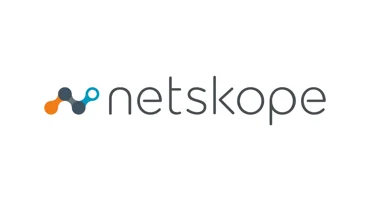Microsoft Zero Trust Versus Google BeyondCorp. This is truly a tale of two approaches to Network Security
In the modern enterprise landscape, the perimeter-centric security model is a relic of the past.
The rise of cloud computing, remote workforces, and the pervasive threat of sophisticated cyber attacks has rendered the “trust-but-verify” approach obsolete.
This shift has propelled the concept of Zero Trust to the forefront of cybersecurity strategies.
At its core, Zero Trust operates on the principle of “never trust, always verify”. This assumes that no user or device, whether inside or outside the network, should be implicitly trusted.
While fundamental Zero Truset principles are universally accepted, practical implementation can vary significantly among technology giants.
Two of the most prominent players in this space, Microsoft and Google, offer distinct yet equally powerful approaches to achieving a Zero Trust.
Understanding the nuances of Microsoft Zero Trust compared to Google BeyondCorp is crucial for any organisation charting its path toward a more secure and agile future.
Google’s BeyondCorp, A Cloud-Native Origin Story
Google’s journey to Zero Trust began internally, long before the term became mainstream.
Following a highly sophisticated attack in 2009, dubbed “Operation Aurora,” Google embarked on a radical rethinking of its security architecture.
Their conclusion?
The corporate network perimeter offered insufficient protection for their distributed workforce and cloud-native apps. This internal initiative blossomed into BeyondCorp. A comprehensive security model that effectively removed the concept of a trusted internal network as born.
BeyondCorp famously posits that access to services should not be determined by the network from which one connects.
Instead, it grants access based on contextual factors related to the user and their device.
Every access request undergoes authentication, authorisation, and encryption.
The brilliance of BeyondCorp lies in its deep integration into Google’s cloud infrastructure from the ground up.
It essentially pushes access controls from the network edge directly to the individual user and device, eliminating the need for traditional VPNs to access internal resources.
Key architectural components within BeyondCorp include the Trust Inferer . This continuously assesses device trust based on factors like software updates, security posture, and compliance.
A Device Inventory Database maintains unique identifiers and detailed information about every authorised device. The Access Control Engine, a centralised policy enforcement point, makes real-time authorisation decisions based on predefined access policies.
All applications are treated as internet-facing, accessed through a secure proxy like Google’s Identity-Aware Proxy (IAP), which handles user and device authentication before granting access.
This approach has allowed Google employees to work securely from virtually any location, on any device, without compromising security.
Microsoft’s Zero Trust, A Holistic Ecosystem Approach
Microsoft’s approach to Zero Trust shares the core “never trust, always verify” philosophy. It’s shaped by Microsoft’s extensive enterprise customer base and vast ecosystem of on-premises, hybrid, and cloud services.
Google, built BeyondCorp from a largely cloud-native perspective for its own operations. However, Microsoft’s Zero Trust framework has to accommodate a broader spectrum of existing IT environments. It also needs to integrate seamlessly with its sprawling product portfolio.
Microsoft’s Zero Trust strategy centers around six foundational elements. These elements must be explicitly verified at every access attempt: Identities, Endpoints, Applications, Data, Infrastructure, and Network.
This comprehensive view ensures that security policies are applied consistently across the entire digital estate.
Microsoft Entra ID (formerly Azure Active Directory) serves as the lynchpin of Microsoft’s Zero Trust model. It provides identity-based access control, conditional access policies, and continuous authentication.
Conditional Access is a cornerstone of Microsoft’s implementation. Organisations can define granular policies that consider user identity, device health, location, application sensitivity, and real-time risk signals before granting access. For example, a policy might require multi-factor authentication (MFA) for users accessing sensitive data from an unmanaged device outside the corporate network.
Microsoft Defender XDR provides robust endpoint protection, threat detection, and response capabilities. this contributes device health signals to the overall trust assessment. Microsoft Purview information protection tools classify and protect data, ensuring only authorised users can access sensitive information.
Microsoft’s strength lies in its ability to offer an end-to-end Zero Trust solution that spans hybrid environments. It leverages existing investments in Active Directory, while seamlessly extending controls to Azure, Microsoft 365, and third-party SaaS applications.
This flexibility is particularly appealing to organizations with complex, heterogeneous IT landscapes, allowing them to progressively adopt Zero Trust principles without a complete rip-and-replace of their infrastructure.
Key Distinctions and Commonalities
While both Microsoft Zero Trust and Google BeyondCorp champion the same security philosophy, implementation methodologies reveal interesting distinctions.
Google BeyondCorp presents a more opinionated, “as-a-service” model. Its origins as an internal solution mean it’s deeply integrated with Google’s cloud and Chrome ecosystem, offering a streamlined, highly secure-by-default experience.
It’s particularly well-suited for organisations that are heavily invested in Google Cloud and Google Workspace. Those seeking a purely cloud-native Zero Trust approach that effectively eliminates the traditional network perimeter can also benefit.
BeyondCorp’s emphasis on browser-based, agentless access for many applications simplifies user experience by largely removing VPN dependencies.
Microsoft Zero Trust, on the other hand, offers a more adaptable and modular framework. It provides a comprehensive suite of products and services that can be integrated to build a Zero Trust architecture, allowing organisations to tailor the implementation to their specific needs, existing infrastructure, and desired maturity level.
This flexibility is a significant advantage for hybrid environments or organizations with substantial on-premises legacy systems that cannot immediately shift entirely to the cloud.
Microsoft’s strong identity management capabilities through Entra ID and its robust endpoint security offerings provide powerful levers for policy enforcement and continuous validation.
Despite differences both share critical commonalities
First, tehy both fundamentally abandon the implicit trust of traditional networks, instead verifying every access request.
Second, they both rely heavily on strong identity authentication, including multi-factor authentication, and continuous device posture assessment.
Third, they both emphasise the principle of least privilege access, ensuring users only gain access to the specific resources they need for their tasks.
And crucially, both leverage continuous monitoring and analytics to detect anomalies and respond to threats in real-time, moving beyond static defenses to dynamic, adaptive security.
Ultimately, the choice between Microsoft Zero Trust compared to Google BeyondCorp often hinges on an organization’s existing technology stack, cloud strategy, and operational preferences.
Organisations deeply embedded in the Microsoft ecosystem, with significant on-premises investments or a hybrid cloud strategy, might find Microsoft’s comprehensive and modular approach more conducive to a phased Zero Trust adoption.
Conversely, organistions leaning heavily into Google Cloud and a cloud-native future might find BeyondCorp’s opinionated, integrated solution to be a more natural fit.
Both represent powerful, effective pathways to securing modern enterprise networks in an increasingly untrusted world.



